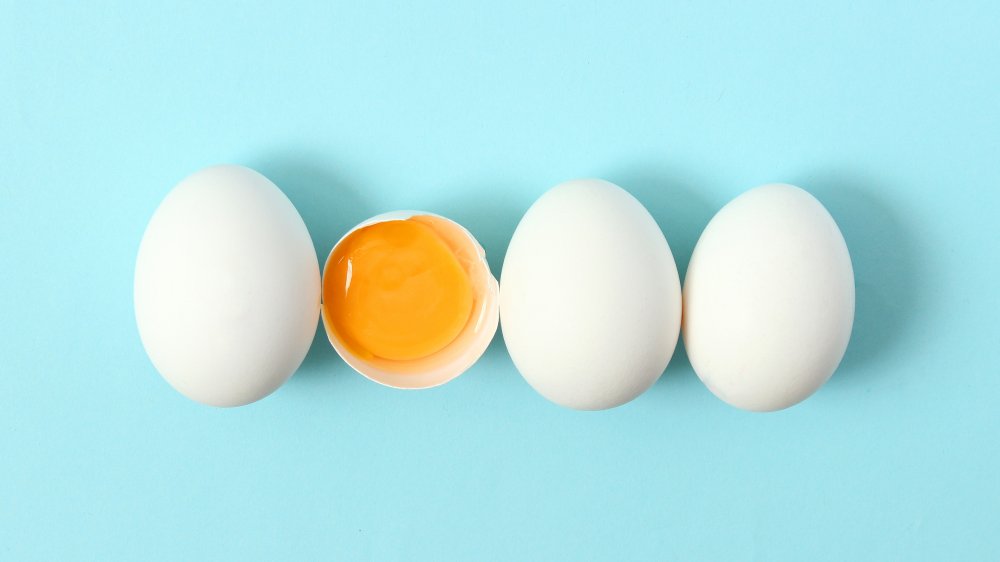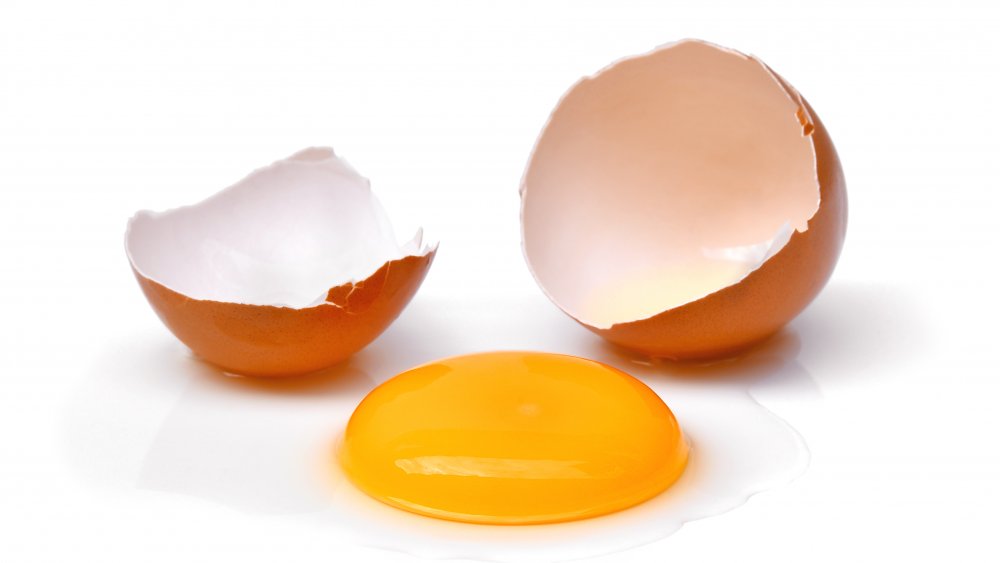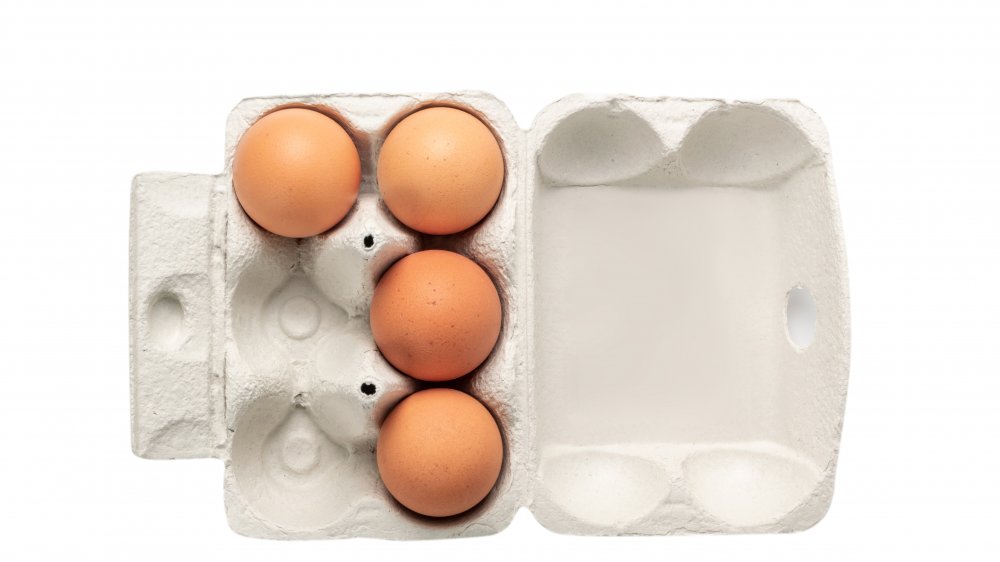This Is Why Egg Yolks Have A White String Attached
Eggs are a staple of any healthy diet. Loaded with protein, they were a superfood before the likes of quinoa and kale made that term popular. As Healthline advises, eggs are incredibly nutritious and positively loaded with vitamins. They have just 77 calories, as well as 6 grams of protein and 5 grams of healthy fats apiece. In many ways, they're the perfect food, because eggs contain a little bit of essentially every nutrient your body needs to run efficiently.
They raise the so-called "good" cholesterol HDL in our systems, potentially protecting us from heart disease, stroke, and other serious health issues. They even contain the nutrient choline, which most people don't even realize exists, which is used to build cell membranes and also has a key role in signaling molecules in our brains. Eggs also boast antioxidants that assist with eye health. And, when eaten as part of a healthy lifestyle, can be utilized for weight loss.
The white string has a very important function
Eggs are the best, there's no doubt about that. But, to be frank, preparing them to eat can be kind of gross. Raw eggs look and feel disgusting, particularly when it comes to that little string attached to the yolk. If you've never noticed it before, look out for it next time you're working with a raw egg. It floats around, sometimes hiding underneath the yolk itself, but it's definitely there.
Don't worry, though, it's not some poor chicken's umbilical cord or anything like that. Instead, it's kind of like a yolk stabilizer. As Metro advises, the little strings are called chalazae, and there's one on either side of each yolk. The strings act like an anchor, to keep the yolk in the center of the egg. They're easiest to spot when the yolk and white are being separated.
The white string should be visible
The chalazae have another important function, as The Sun outlines. They act as indicators of how fresh the egg is. The more obvious they are, the fresher the egg. This is because, as the egg ages, the chalazae fade gradually until they disappear completely. So, if they're completely gone, you might have kept your eggs in the fridge a bit too long (or they were sitting in the store for longer than they should've been).
HuffPost notes "chalaza" (singular) is pronounced like "cuh-lay-zuh," in case you want to wow your friends with your egg knowledge at parties. Keep in mind, also, these little anchors are special kinds of protein, just like every other part of the egg, so be sure to gobble them up, even if you're kind of grossed out by them.


